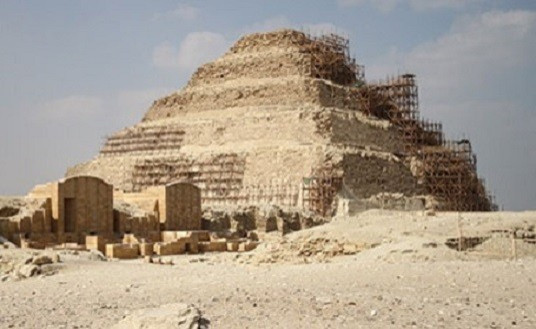Ancient Egyptians Abandoned Pyramids 'Because of Extreme Temperature Changes'
Structural engineer Peter James says expansion and contraction of rocks caused demise of the pyramids

The ancient Egyptians abandoned the pyramids because of structural damage caused by thermal movement, an expert has said.
Peter James, a structural engineer, has produced a new theory on what caused the demise of the pyramids in Egypt.
In 2011, James was charged with the task of saving the pyramid of Djoser, a 4,700-year-old structure that was badly damaged by an earthquake in 1992.
At the time, he said the biggest obstacle in trying to save it was forgetting everything he already knew about structural engineering.
"Everything you've learned about building techniques and architectural principals goes out of the window," he told the BBC. "You have to think like an ancient Egyptian, and come up with solutions appropriate to the original design."
In an article for Structure magazine, James said he now believes the damage caused to the pyramids was a result of thermal movement, where the limestone expanded and contracted because of temperature changes.
While working on the Step pyramid, James was asked his opinion on securing the Bent pyramid, 40km south of Cairo and an early example of pyramid design. It was built in about 2600 BC.
He noticed that although there was structural damage to the pyramid's extremities, it did not have any movement in its foundations.

"A popular theory is that the missing cladding was removed by thieves. At the lowest levels that could be the answer, but the same condition occurs at higher levels and in an apparently random manner, with no signs of indentations from temporary scaffolding or of any symmetrical cutting of the blocks to aid removal," he said.
"The damage here appears to be caused by a giant whose hand has swept across the face of the pyramid with enormous energy, sucking out the facing and leaving the ragged empty sockets."
James believed the dilapidation was a result of daytime temperatures rising to 40C and dropping to 3C at night.
He explained that the Bent pyramid had fared better than its younger counterparts because of the rudimentary building technique used. "Why does the Bent pyramid still have half of its outer casing attached, while the Red pyramid and the Great Pyramids at Giza have virtually none?
"I believe this is due to the increased skills of the craftsmen, who developed more knowledge and precision as the process of pyramid construction developed. They became able to provide better accuracy, build quality, and jointing of the slabs.
"The Bent pyramid was probably built with less care, and with more voids between the stones that acted like expansion joints. The casing blocks being inclined inwards at the base of the pyramid may have limited the expansion."
James added that while the theory is his opinion rather than fact, he believes thermal movement "led to the crumbling of these magnificent structures, and eventually to their discontinued use".
© Copyright IBTimes 2025. All rights reserved.




















